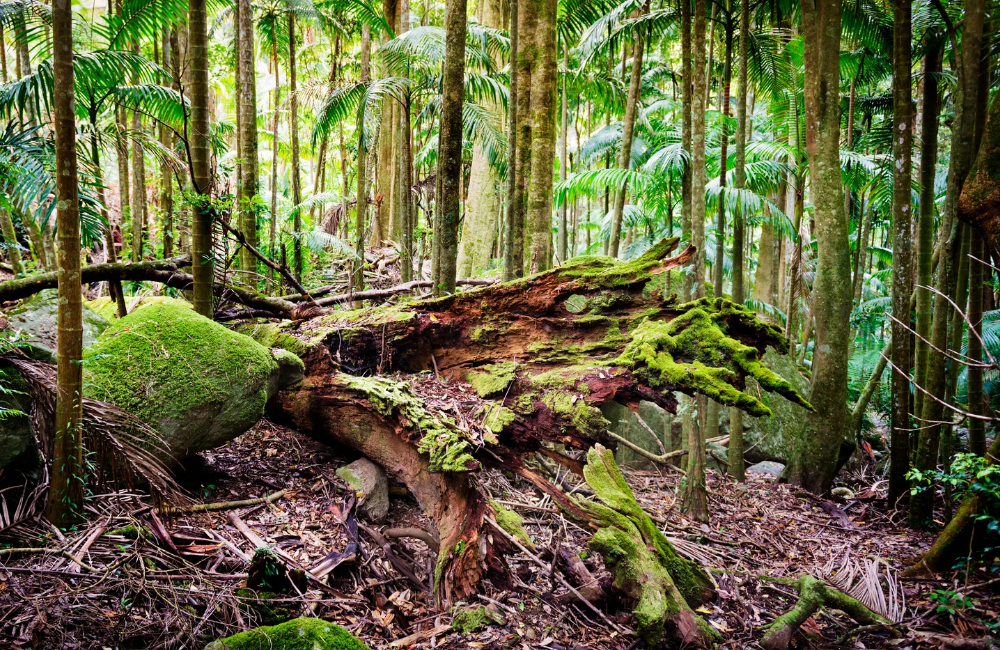India ranks among the worst five performing countries in conserving its natural ecology as per the Nature Conservation Index (NCI) 2024 released in October. The crucial Global Index focuses on the efforts of preserving the deteriorating ecological conditions across the globe. The Nature Conservation Index analysed 180 countries on 25 different indicators including protected area cover among others. India has been ranked 176th in this first-ever index released this year.
The Nature Conservation Index analysed 180 countries on 25 different indicators including protected area cover among others. India has been ranked 176th in this first-ever index released this year.
The Index shows painstakingly that India has been performing poorly on various ecological parameters: ‘India faces both alarming biodiversity challenges and promising opportunities. The country’s biodiversity richness is under constant threat due to a population density that equals some of the world’s most congested areas and a doubled population since the late 1970s. Merely 5% of India’s land is officially protected.‘
Independent researchers have been highlighting for years how the government actions and policies intended for environment conservation have been an utter failure in the country and has resulted in the worsening conditions of the natural habitat and multiple endemic species facing near extinction. The NCI gives its nod to all these warnings as India has been ascribed the score of 45.5 out of 100, and ranks among the lowest 5 out of 180 countries. The only 4 countries that fare worse than India as per the Index are Micronesia (177), Iraq (178), Turkey (179) and Kiribati (180). Bhutan is the only South Asian country to be able to make it to the top 50 as the country scored 63.1 and ranks at 15th spot.

Neighboring Nepal has also been shown to perform well on various ecological parameters and is ranked 60th. Sri Lanka and Pakistan have been ranked above India with ranks of 90 and 151 respectively.
The reason for India’ position at the bottom low is primarily the inefficient land management and increasing threats to its biodiversity. Luxembourg is at the top position in the index, all top five ranks are occupied by the European nations.
A novel index to promote conservation and protect biodiversity
The Index was put together by various scientists and academics at Goldman Sonnenfeldt School of Sustainability and Climate Change at Ben-Gurion University of the Negev and BioDB.com, a non-profit website. The method for this index is a data-driven analysis evaluating each country’s path in balancing conservation and development. It also intends to help governments and organisations promote conservation policies for long-term biodiversity protection and identify the barriers and concerns about local ecological conditions.
‘You can’t manage what you can’t measure‘ — so the saying goes. Similarly, the motivating idea for the developers of the Nature Conservation Index, is to provide a scientific assessment of conservation efforts across the world. It will aim at providing insights that will lead to improved conservation strategies, and pave the way for policymaking prioritising global biodiversity protection and sustainable development. NCI is a tool that by trying to show how well countries are protecting their natural environments, will aim at fueling the fight for environmental protection.
This novel initiative on global conservation efforts in the form of a Nature Conservation Index (NCI) uses four markers — land management, threats to biodiversity, capacity and governance, and future trends. NCI evaluates the conservation efforts across the globe by measuring 25 different indicators.
The parameter of land management describes the coverage of protected areas (both terrestrial and marine), representativeness of protected areas, connectedness of landscapes or lack of it (which is an indicator of habitat fragmentation), the extent of converted land (urban, industrial, agricultural) and sustainable practices in nitrogen and pesticide use. India has fared poorly in pesticide use as well with a score of 39 and a ranking of 82.

Sustainable land use by various communities is incredibly essential, as the index highlights, because of a high rate of land conversion – 53 percent – for urban, industrial, and agricultural purposes. With flagging the staggering uses of pesticides the initiative also highlights the alarming situation of soil pollution which might hamper the food production across the globe. On the marker of soil pollution, a low score of 45 also throws light on country’s growing agrarian crisis and the deteriorating situation of soil across the northern plains.
Ecological devastation: a result of flawed developmental model
As per the Index, ecological conditions in India are particularly concerning in the ‘Land Management’ category. The alarming situation of natural habitat degradation and diminished forest cover in the country has led it to be given the dismal scores of 2 and 0 on the parameter for Protected Areas – Terrestrial and Marine respectively. Its score on species coverage through Marine Protected Areas in the ‘Threats to Biodiversity’ category, also stands at 0.
These disappointing scores are rather unsurprising and not much of a revelation as various environmentalists and climate activists for several years have been warning about the disastrous development model that is ongoing in the country which only obsesses with high growth rates. Various big projects under this model have been catastrophic for the forest cover as swathes of trees have been cut for the big projects putting aside the environmental norms.
As the index has put together, an alarming 23,300 km² (8,996 mi² ) of tree cover was lost between 2001 and 2019 due to ongoing deforestation. The flawed economic model defines the development only in the terms of infrastructure building and completely excludes the role of forests and natural habitat in the local rural economy and in supporting the marginalised communities, forget about the irreplaceable role nature plays in maintaining the ecological balance on earth.
The big projects related to highways, airports, ports and river valleys that is being carried out in the country also stands in stark contrast to the globally approved environment norms and violates various environment regulations of the country.
The big projects related to highways, airports, ports and river valleys that is being carried out in the country also stands in stark contrast to the globally approved environment norms and violates various environment regulations of the country. The NCI index has described several factors responsible for the ecological devastation among which the habitat loss, fragmentation by agriculture, urbanisation, and infrastructural development, are among the most serious threats to country’s rich biodiversity.

The development programmes only keen on the ‘infrastructure building’ are turning out to be destructive for various protected areas and have destroyed swathes of forest areas. Sensitive ecosystems like coral reefs and alpine regions are facing a multi-fold onslaught from government neglect to climate change.
Himalayan glaciers and ecology threatened by big infrastructure projects
The focus on big highways under the current administration has completely ignored the measures to be taken into consideration in the ecologically sensitive areas of states such as Uttarakhand and precarious land situation on the Himalayan hills. These development projects are turning out to be lethal for the local ecology and has been described by various ecologists as the Himalayan Plunder.
A massive 900-km highway project known as the Char Dham Pariyojana is being carried out by the Centre in the interiors of the Himalayan up to the originating points of Ganga and Yamuna. The project will extend the highway connectivity to four sacred Hindu sites: Gangotri, Yamunotri, Badrinath and Kedarnath. Environmental groups have flagged the environmental costs and devastation that might unleash on the glaciers of the region and the fragile Himalayan ecology– already facing a serious ecological crisis – as an outcome of this ambitious project.
Environmental groups have flagged the environmental costs and devastation that might unleash on the glaciers of the region and the fragile Himalayan ecology– already facing a serious ecological crisis – as an outcome of this ambitious project.
As Vijyata Lalwani writes for the Scroll.in, ‘Modi Government’s ambitious project is built on lies and legal violations.‘ The highest court of the country ordered in September 2020 to narrow the width for the highways under this project. However, the order was too little – too late as a significant cost had already been paid.
As the Supreme Court appointed committee reported, the ecology of the region was ravaged under this project – nearly 700 hectares of forest land was flattened, 47,043 trees razed to the ground, and the natural drainage of streams and springs blocked by muck dumping. While the authorities went on flattening the Himalayan hills, often without environment clearances, 11 landslides occurred in the span of just four months in 2020, causing deaths and injuries.

Protecting India’s biodiversity and ecology, therefore, is the need of the hour. We must move towards sustainability and ethical infrastructure building instead of focusing on mindless development in the country.




